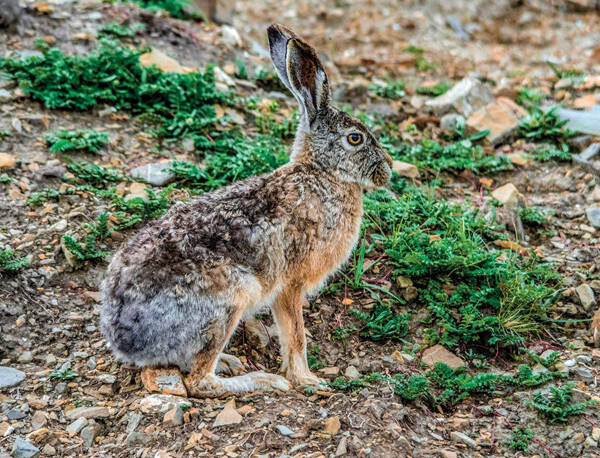Ochotona koslowi
IUCN
LCBasic Information
Scientific classification
- name:Ochotona koslowi
- Scientific Name:Ochotona koslowi,Ochotonus
- Outline:Lagoiformes
- Family:Lagomorpha Ochotonidae Ochotona
Vital signs
- length:200-230mm
- Weight:150-180mm
- lifetime:
Feature
The Koch pika is the oldest relict species among the more than 20 existing species of pikas, and is one of the largest species in the genus Pika.
Distribution and Habitat
It is endemic to China. Currently, it is only found in the high altitude areas of the Altun Mountains in southern Xinjiang.
It inhabits alpine grasslands and desertified alpine grasslands above 4,200 meters above sea level. The dominant plants are purple-flowered Stipa, feather-columnar Stipa, sclerophyllum and cushion-shaped Ceratophyllum.
Appearance
The individual is larger. Body length averages 230mm. The frontal bone is highly protruding, even more protruding than that of the black-lipped pika, so it is also called the protruding pika. This is a distinctive feature of this species. The coat is very thick, light brown gray in summer and beige in winter. The ventral surface is beige or off-white. The ears are shorter, no more than 20mm, shorter than the similar-looking black-lipped rat and rabbit ears, hairy, and white-edged. The lips are gray, different from the black color of the black-lipped pika. In the skull, the incisor and palatine foramen merge into one large foramen, and there is no small foramen oval in the frontal bone.
Details
The Kochia pika belongs to the subgenus <Conothoa> and is very rare. It was first collected by a Russian officer in 1884 when he crossed the Keriya Pass from Tibet to the Tarim Basin. It was named by another Russian scientist in 1894. But there has been no record since then. It was not until 1984 that Gu Jinghe and Xiang Chaoqun, members of the comprehensive scientific expedition team of the Altun Mountain Nature Reserve, collected it again on the river beach at 4260m by the Aqikkule Lake in the eastern section of the Kunlun Mountains. It was reported by Zheng Changlin (1984) and the species was recognized again.

According to Li Weidong et al. (2000), the Koch's pika lives in a family-like group near the Aqikekule Lake in the Altun Mountains and is active during the day. The vegetation type of its habitat is an alpine meadow composed of plants such as sclerophyll, purple-flowered Stipa, feather-column Stipa, sickle-shaped oxtropis, Pamir-shaped sedge, pothos and heterophyllous cyanus. In some river beaches and lakeshores, there is an alpine shrub vegetation composed of creeping water cypress communities, and the transition zone is an alpine desert steppe composed of cushion-shaped camel hairtail. Among them, sickle-shaped oxtropis, Pamir-shaped sedge, heterophyllous cyanus, creeping water cypress, etc. are the main food of Koch's pika.
Koch's pika lives in groups and is active during the day, reproducing 1 to 2 litters each year.
This species has a certain number in the habitats currently found, but the fluctuation is large, the distribution area is discontinuous, and the survival status is worrying, which deserves in-depth research and protection.









